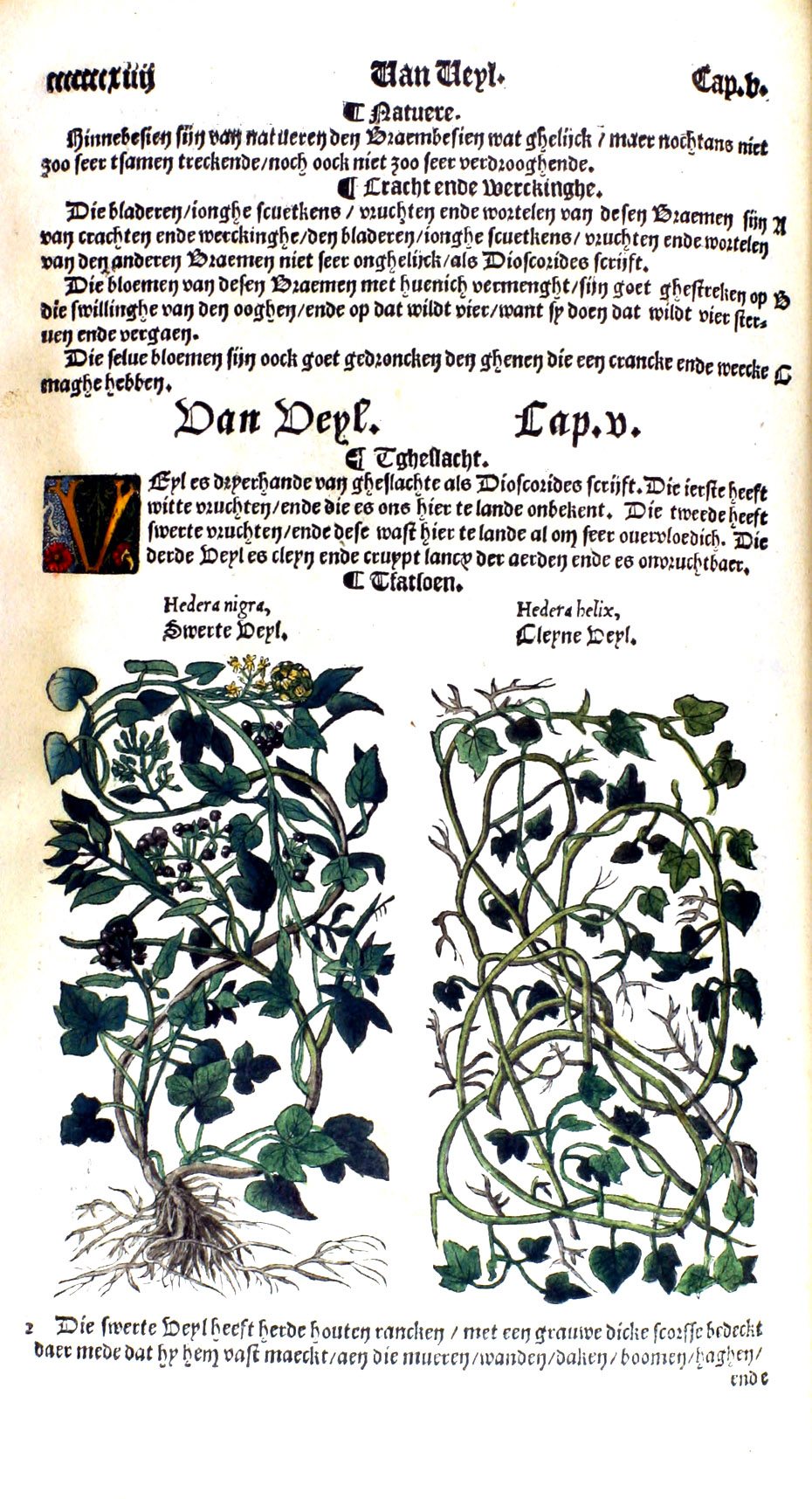
Ivy, ordinary and unusual
The ivy (Hedera helix L.) was used in rituals already in ancient times. In Egypt, the ivy was dedicated to Osiris. Also in other mythological figures, the ivy is called.Among other things, the plant was associated with the Greek god Dionysos or his Roman counterpart Bacchus, both god of wine. Dionysos taught people how to grow the vine in classical antiquity. Images of him often show the vine, but ivy also occurs on it. Dionysos and his entourage have a wreath of ivy leaves around their heads and around Dionysos's staff, and the wine cup winds an ivy, so that it might be drunk less quickly. With it, the vine and ivy have become both attributes of Dionysos. Ivy and vine have thus acquired a mythological connection, but also their leaves (three- to five-lobed) show a certain similarity.
Substances and action
Like many other plants, ivy has substances that can have a beneficial or, conversely, adverse effect in or on the human body. Young foothills and dried leaves were applied already in ancient Egypt and Greece against headaches. Leaf extracts were expectorant, diaphoretic and feverish, and magical powers were attributed to them. It would help with external use with bumps and bruises. This is in line with today's popular use of ivy in the
wound care as a cover for burns and ulcers [6].
Today, phytotherapy is mainly concerned with the use of dry extracts used in cough due to lung problems [7]. The extract has an antiseptic, mucolytic and anti-inflammatory effect which is likely to be based on the presence of saponins, in particular alpha-hederin in the leaf [8]. In addition, it is used internally as an analgesic against cramps [6].
In addition to the above positive qualities, the use of ivy can also have negative effects. If there is too high a concentration of saponin glycosides present in the plant (the main ones being alpha-hederin, hederasaponin C and hederasaponin D), symptoms of poisoning may occur when ingested. Especially leaves and berries contain listed substances. Eating large amounts of berries leads to vomiting, diarrhea, fever and convulsions. The berries are very bitter and
do not invite to consumption [9]. Eating leaves can lead to cramps. Contact with the plant juice from the leaves — for example in pruning — can lead to dermatitis; falcarinol is held responsible for this [10]. Two cases have been described where ingestion of an extract of the plant led to anaphylactic, highly allergic shock [11].
Symbolism
In classical antiquity, ivy, in addition to the physical plane (liver protection), also had a symbolically protective function. The plant actually had a double role: it was the symbol/sense image of drunkenness but also gave protection against drunkenness because the leaf would make the wine innocent [12]. In addition, he would give man divine abilities in the form of clairvoyance and prophecy. Or was that prophecy an expression of drunkenness?
In the Middle Ages, witches could be recognized by wearing an ivy wreath. Ivy is also the sense of love. These include qualities such as immortality, fidelity, attachment, tenacity, lasting affection and friendship. The evergreen character and the adhesive properties of ivy support these allotted properties [13].
References
1. Blöte-Obbes MC. The fragrant herbhof. W. de Haan, Utrecht, 1941.
2. Van der Meijden R. Heukels' Flora of the Netherlands, 23rd edition. Wolters-Noordhoff, Groningen, 2005.
3. Lanje J (red). Compendium of the Pteridophyta and Spermatophyta. Oosthoek's Uitversmaatschappij NV, Utrecht, 1968.
4. Voskuil J, Smit D. The Green Book. Encyclopedia of flowers and plants. Lekturama, 1987-1990.
5. From the Laar HJ. Climbing, slate and pendulum plants. Floraprint, Lisse, 1998.
6. The Cleene M, Lejeune MC. Compendium of ritual plants in Europe. Man and Culture, Ghent, 1999.
7. European Medicines Agency. Community herbal monograph on Hedera helix L., folium. 2011.
8. European Medicines Agency. Assessment report on Hedera helix L., folium. 2011.
9. The Cleene M. Poisonous Plant Guide, revised second edition. Thieme, Baarn, 1989.
10. Paulsen E, Christensen LP, Andersen KE. Dermatitis from common ivy (Hedera helix ssp. helix) in Europe: past, present and future. Contact Dermatitis2010; 62 (4) :201-9.
11. Morphin-Maciel BM, Rosas-Alvarado A, Velázquez-Sámano G. Anaphylaxis due to ingestion or ivy syrup (Hedera helix L.). Report of two cases. Rev Alerg Mex 2012; 59 (1) :31-6.
12. Meulenhoff J, Nijhuis S. Plants and their legends. WBOOKS, Zwolle, 2012.
13. Cooper JC. Illustrated encyclopedia of traditional symbols. Synthesis, Rotterdam, 2001 (Dutch edition).
14. Holzinger F, Chenot JF. Systematic review of clinical trials assessing the effectiveness of ivy leaf (Hedera helix) for acute upper respiratory tract infections. Evid Based Complement Alternat Med 2011; 2011:382789; Doi:10.1155/2011/382789.
15. Lenaghan SC, Burris JN, Chourey K, Huang Y, Xia L, Lady B, Sharma R, Pan C, LeJeune Z, Foister S, Hettich RL, Stewart CN, Zhang M. Isolation and chemical
analysis of nanoparticles from English ivy (Hedera helix L.) J R Soc Interface 2013;
10 (87) :20130392; Doi:10.1098/rsif.2013.0392.
16. Huang Y, Lenaghan SC, Xia L, Burris JN, Stewart CN, Zhang M. Characterization or
physicochemical properties of ivy nanoparticles for cosmetic application. J Nanobiotechnology 2013; 11 (3); Doi: 10.1186/1477-3155-11-3.
17. Yi S, Xia L, Lenaghan SC, Sun L, Huang Y, Burris JN, Stewart CN, Zhang M. Biosynthesis or gold nanoparticles using English ivy (Hedera helix). J Nanosci Nanotechnol. 2013; (13) 3:1649 -59.
#klimop #Hedera #geneeskruiden
- Comments (0)
- Recommended
- Milestones





Here are your recommended items...
Here are your milestones...




